Back to Edinburgh Index
Mount Vernon Cemetery
Liberton, Edinburgh, Scotland
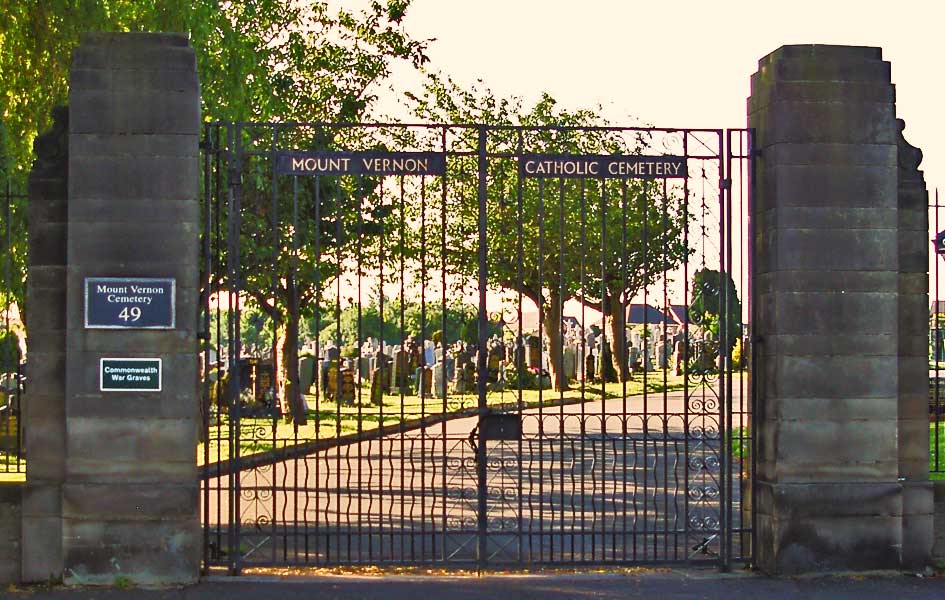
Mount Vernon Cemetery, including Commonwealth War Graves.
The Liberton Kirk cemetery gives a great insight into Liberton's past, but the picture would not be complete without including the Catholic cemetery as well. I didn't have time to explore it fully on this trip, but I saw enough to see that there were many Polish, Irish and Italian graves in the cemetery.
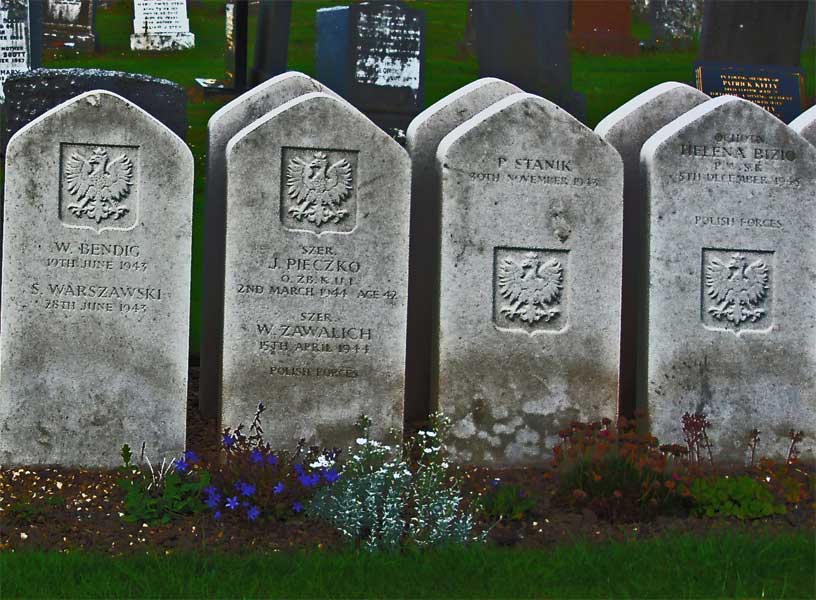
Plain military tombstones for Polish Forces WWII casualties
There are broadly two sorts of Polish tombstones in the cemetery. The first are the standard plain white stones seen all over the battlefields of the two world wars and in the homelands of the combatants. There are about thirty of these listed for this cemetery and the picture above is of a sample of these. They are actually pristine white but I have had to fiddle around with the brightness and contrast to make the inscriptions visible onscreen.
An interesting feature of the set above is the inclusion of a woman combatant which I suspect is unusual. She was Helena Bizio, born in 1905 in Międzyrzce, Wołkowysk Dist., Poland.
Here is a full
list of Polish war casualty burials in this cemetery.
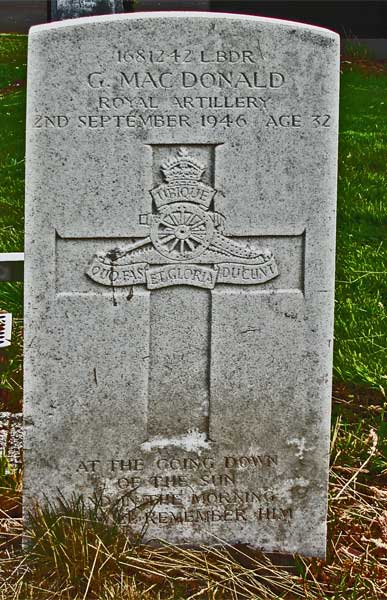
There are also British graves in the standard Commonwealth Graves format (as above).
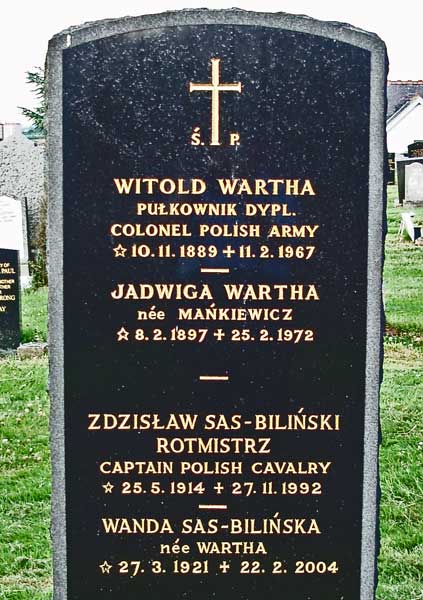
The second sort of polish graves are of black marble with gold leaf recessed inscriptions. I have included a few of these for their variety. The men in the one above were in the Polish forces and were married to Polish girls.
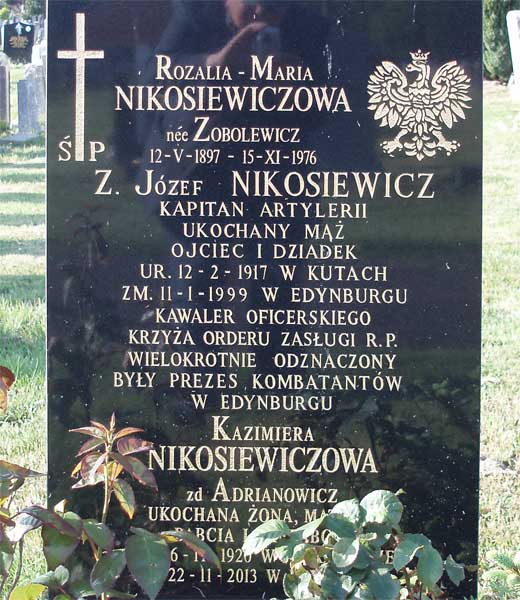
There appears to be quite a bit of information on this stone and if I get a chance I'll try and find out what it all means.
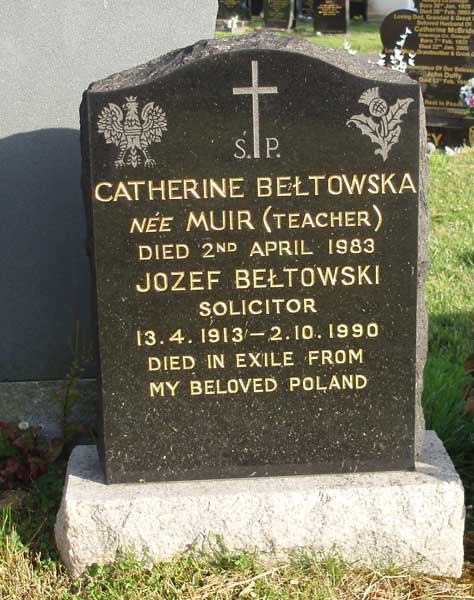
Many of the Poles in the non-war-casualty category seem to have settled here after the end of WWII. Of these, some were married to Polish girls, and some to Scottish girls as the stone above testifies. The stone also reflects the sadness of many of these Poles at not being able to return to their native land which was then under Soviet control.
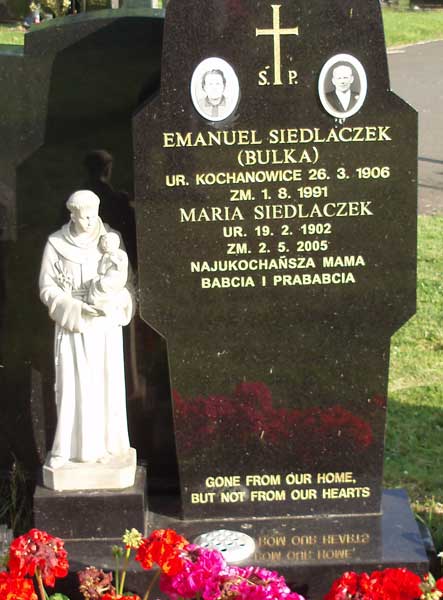
This is a more conventional grave where the lady on the stone is remembered as a beloved mother, grandmother and great-grandmother.
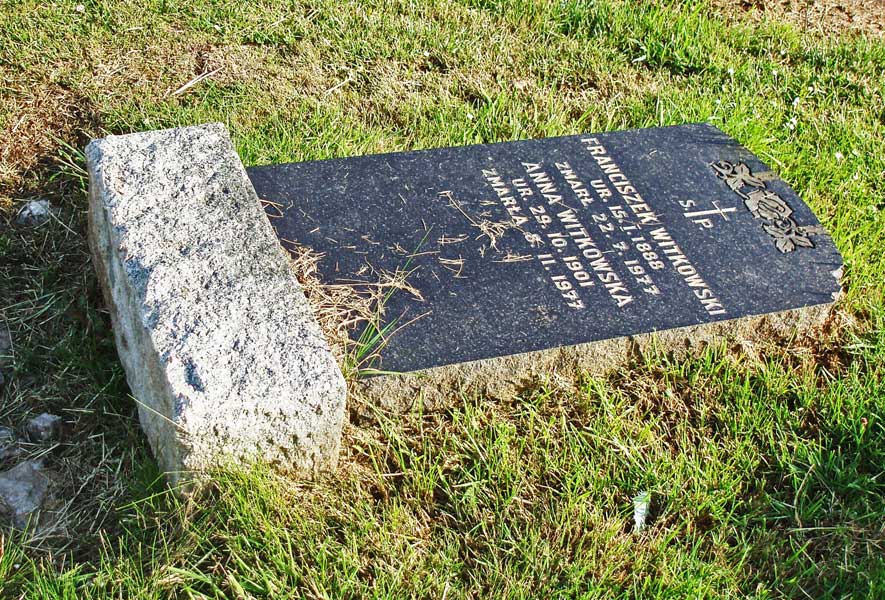
Unfortunately this stone has fallen over, or was it pushed, and it has not yet been restored to its righful dignity.
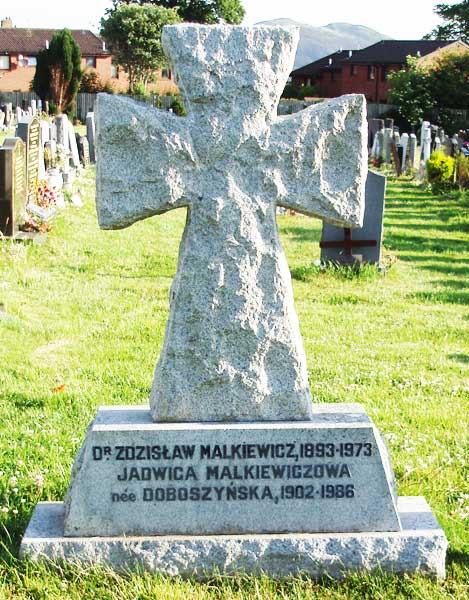
While there are many of the black marble variety, this one appears to be unique and very impressive in its novelty.
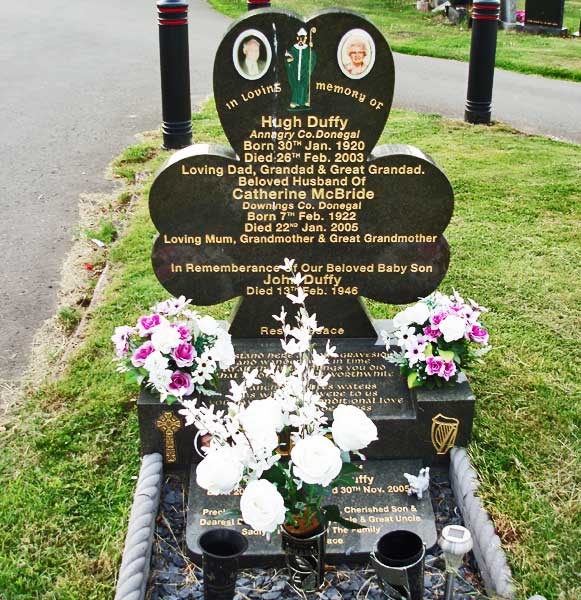
And now to some Irish graves. These are a Donegal couple, relatively recently deceased, but there is also their son who died as far back as 1946 when the couple were in their twenties.
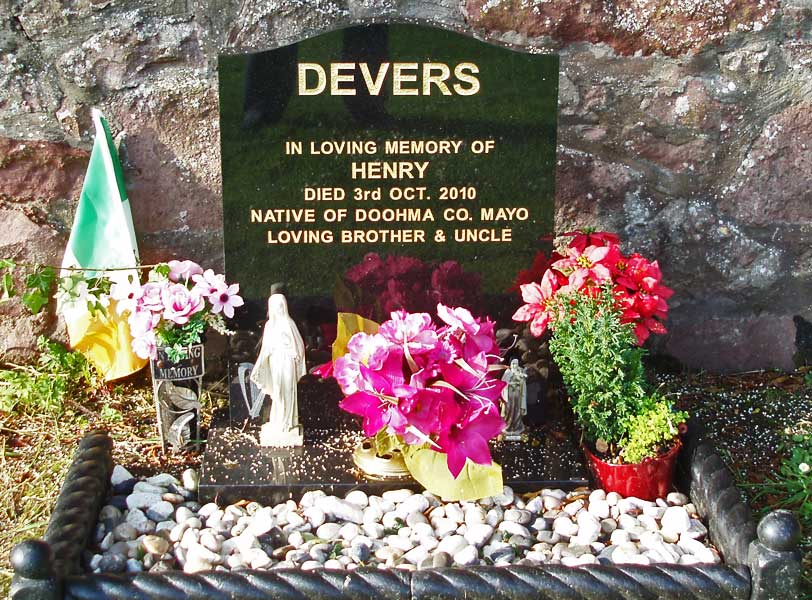
Henry from as far away as Mayo, now relying on God's help.
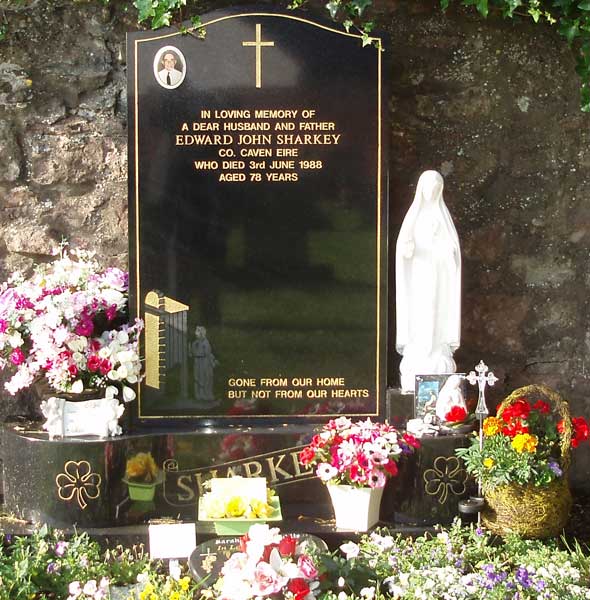
Unusual to see Éire in an English language inscription. Spelling of the county suggests that the stone was erected by relatives who did not have strong connections with the homeland.
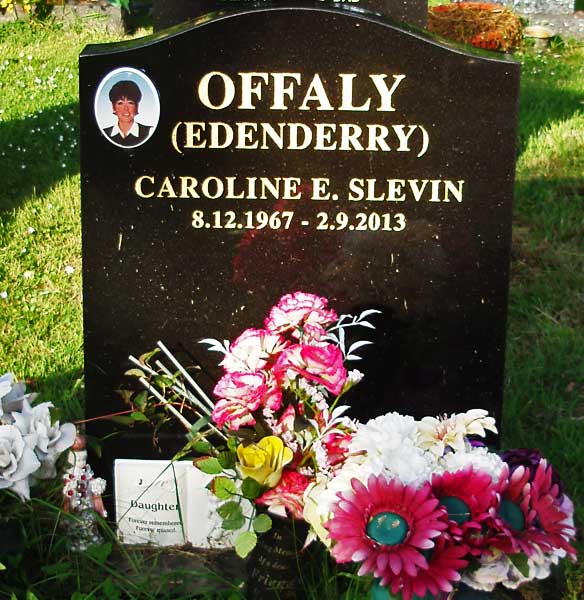
Unusual to see the county and town names given precedence over the family name. Involuntary emigration and a yearning for home, perhaps?
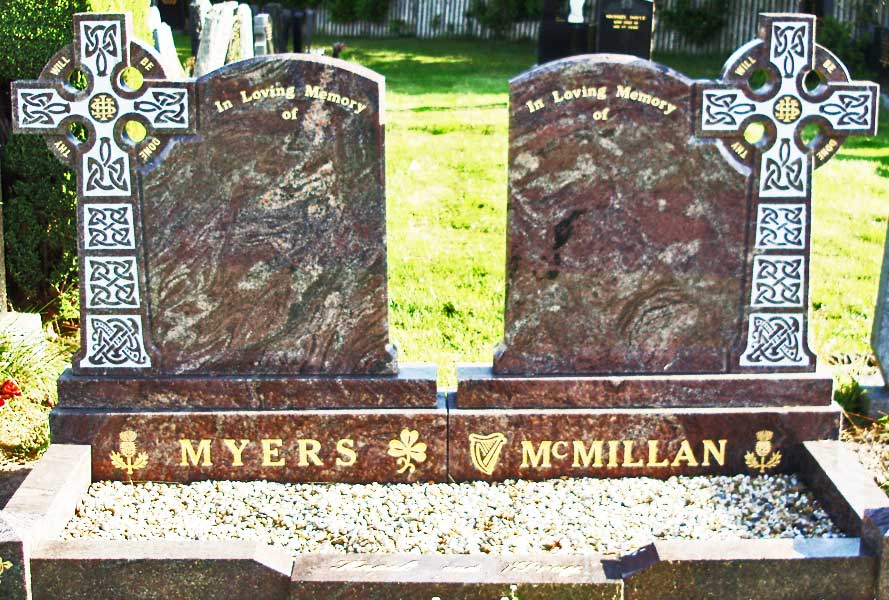
An intriguing Scottish-Irish union. No names as yet and an invitation to kneel and pray on the near border stone.
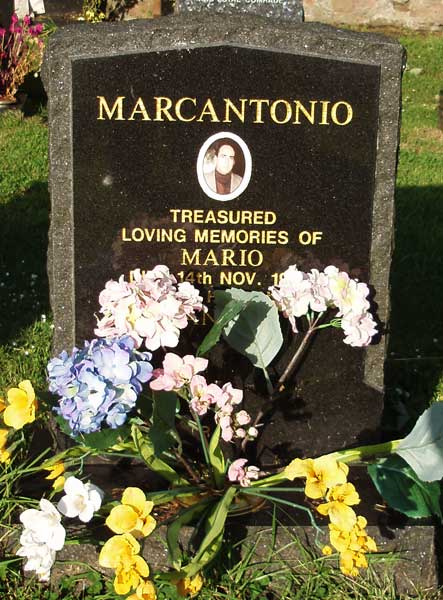
There are quite a few Italian graves. I don't know what the background to this is. Anyway, I couldn't resist using this one. Friends, Scotsmen and countrymen, lend me your ears.


And some who are not here at all.

Finally, deep in the corner of the Memorial Garden, this unnamed wee grave. A real sense of sadness.
Back to Edinburgh Index

















